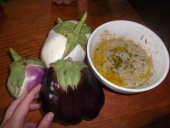








 1
1
















 1
1




My project thread
Agriculture collects solar energy two-dimensionally; but silviculture collects it three dimensionally.








My project thread
Agriculture collects solar energy two-dimensionally; but silviculture collects it three dimensionally.













My project thread
Agriculture collects solar energy two-dimensionally; but silviculture collects it three dimensionally.








 2
2




My project thread
Agriculture collects solar energy two-dimensionally; but silviculture collects it three dimensionally.









|
Yeah, but how did the squirrel get in there? Was it because of the tiny ad?
heat your home with yard waste and cardboard
https://freeheat.info
|




